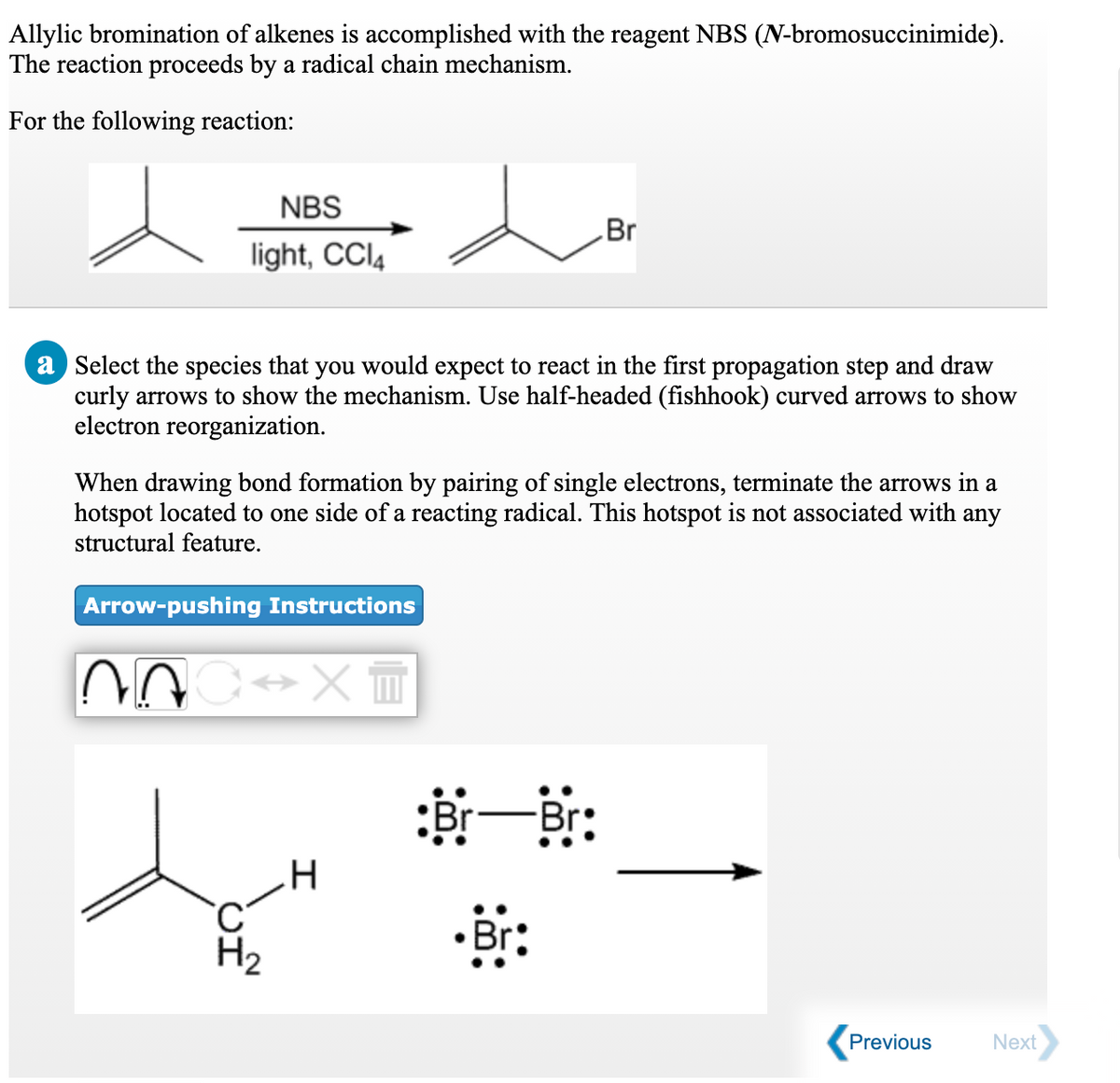Allylic bromination of alkenes is accomplished with the reagent NBS (N-bromosuccinimide). The reaction proceeds by a radical chain mechanism. For the following reaction: NBS Br light, CCI4 a Select the species that you would expect to react in the first propagation step and draw curly arrows to show the mechanism. Use half-headed (fishhook) curved arrows to show electron reorganization. When drawing bond formation by pairing of single electrons, terminate the arrows in a hotspot located to one side of a reacting radical. This hotspot is not associated with any structural feature. Arrow-pushing Instructions 将一郎: H2 Proviouo
Ionic Equilibrium
Chemical equilibrium and ionic equilibrium are two major concepts in chemistry. Ionic equilibrium deals with the equilibrium involved in an ionization process while chemical equilibrium deals with the equilibrium during a chemical change. Ionic equilibrium is established between the ions and unionized species in a system. Understanding the concept of ionic equilibrium is very important to answer the questions related to certain chemical reactions in chemistry.
Arrhenius Acid
Arrhenius acid act as a good electrolyte as it dissociates to its respective ions in the aqueous solutions. Keeping it similar to the general acid properties, Arrhenius acid also neutralizes bases and turns litmus paper into red.
Bronsted Lowry Base In Inorganic Chemistry
Bronsted-Lowry base in inorganic chemistry is any chemical substance that can accept a proton from the other chemical substance it is reacting with.

Trending now
This is a popular solution!
Step by step
Solved in 2 steps with 2 images






